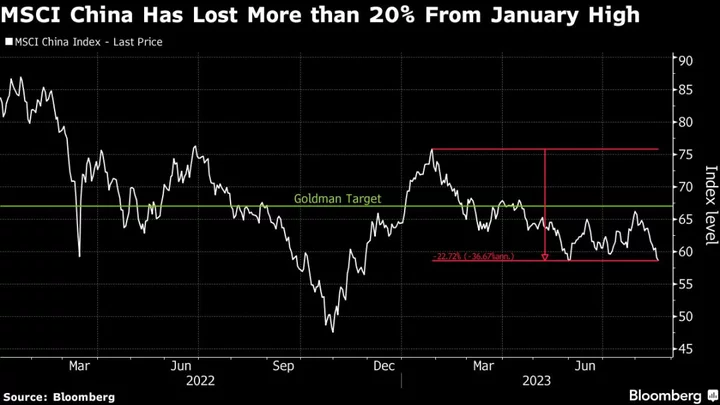A few sentences in a note from an obscure United Nations group has ignited a firestorm in the carbon removal world. At issue is a beguilingly simple question: What counts as a carbon offset?
The document — a draft to define a new global carbon market, released last month — elevated nature-based solutions like planting trees while downplaying the role of carbon dioxide removal (CDR) using machines or other forms of technology. Both natural and technological approaches can be effective ways to stave off the most catastrophic impacts of global warming. The demarcation might not sound like a big deal, but to the carbon removal industry, it’s existential.
Another UN-backed group, the Intergovernmental Panel on Climate Change (IPCC), has warned that the world will almost certainly need to remove billions of tons of carbon a year from the atmosphere by mid-century to limit warming to 1.5C.
The market for carbon offsets is estimated to be about $2 billion today. By mid-century, BloombergNEF projects it could grow to anywhere from $160 billion to $624 billion annually. (In a separate analysis, BloombergNEF found that relying on carbon removal alone could cause the market to reach nearly $1 trillion by 2037.)
If the UN declares nature-based solutions the one and true way to remove carbon from the atmosphere, it could effectively ice a growing industry out of the very market it's trying to serve, potentially imperiling the climate in the process.
The litany of carbon removal's sins, according to the UN note, include not contributing to sustainable development and being as-yet “technologically and economically unproven.” Engineered removals also “are not suitable for implementation in developing countries and do not contribute to reducing the global mitigation costs,” the note said. Yet the panel declared traditional carbon market solutions like reforestation relatively benign despite a mountain of evidence showing projects often fail to deliver on their emission-cutting promises and sometimes trample on human rights.
The document and subsequent backlash that followed get at fundamental and growing tensions about what counts as a ton of carbon removed and stored. About the only thing everyone seems to be able to agree on is that there isn’t a carbon-removal technique on the market today that’s cheap and easy to do as well as durable and permanent.
Direct-air capture — using machines to grab carbon from the sky — is only able to remove a few thousand tons of carbon a year and remains expensive and energy intensive. Nature-based solutions, while cheaper and more established thanks to years of being traded on voluntary markets that companies participate in to supplement their own emissions reduction efforts, have a shaky history when it comes to reliability and durability. The natural stuff also requires quite a bit of land. The low cost of nature-based solutions reflects how voluntary carbon markets have driven a race to the bottom, with a flood of projects based on sometimes shoddy accounting.
In essence, the world currently has two choices: pay a little money for nature-based solutions, or pay a premium for more durable removal. (For context, carbon removal startup Charm Industrial charges customers starting at about $600 per ton, which is the same amount Bill Gates said he paid another removal company, Climeworks.) The UN is potentially putting its thumb on the scale in favor of the former.
“I think the short answer to this is we need the entire portfolio of solutions at the appropriate time at the appropriate application,” said Ben Kolosz, assistant professor of renewable energy and carbon removal at the Energy and Environment Institute of the University of Hull. “So I wouldn’t say one is better than the other. Each has its own strengths and weaknesses, and it’s important to take those into account.”
Rather than asking the UN to favor one method over another, many in the carbon removal industry are calling for the intergovernmental organization to adopt a “method-neutral, criteria-based approach” to evaluating projects. A group of 100 carbon removal industry advocates recently called for the UN to instead adopt the definition of carbon removal set out by one of its own science experts in the IPCC that doesn’t distinguish between nature-based and engineered solutions. Instead the panel of top climate scientists defines carbon removal broadly as “anthropogenic activities removing carbon dioxide (CO2) from the atmosphere and durably storing it in geological, terrestrial, or ocean reservoirs, or in products.”
“Virtually every CDR approach is a hybrid of nature and engineering,” said Ben Rubin, the executive director of the Carbon Business Council, a nonprofit representing carbon management companies, which gathered the letter’s signatories. He pointed to examples like biochar and enhanced rock weathering, which both use natural processes to remove carbon, in addition to human engineering.
The draft document is part of ongoing discussions in the lead-up to COP28 climate talks being held in Dubai later this year. No formal framework has been adopted yet by the carbon removal standard-setting group within the UN, though the note does foreshadow where the final draft may land.
When the language is finalized, it will provide an umbrella framework for carbon removal that will have ripple effects across the industry, especially as national governments ramp up investments in the burgeoning space. The UN panel’s final decision will have huge consequences for the carbon removal industry, as well as the direction the world takes when it comes to pulling carbon from thin air to avoid catastrophic warming.
“The lines just start blurring so quickly,” said Rubin. “Which is why I think having a criteria-based approach has the most clarity rather than artificially saying that one thing is nature and one thing is technological.”









